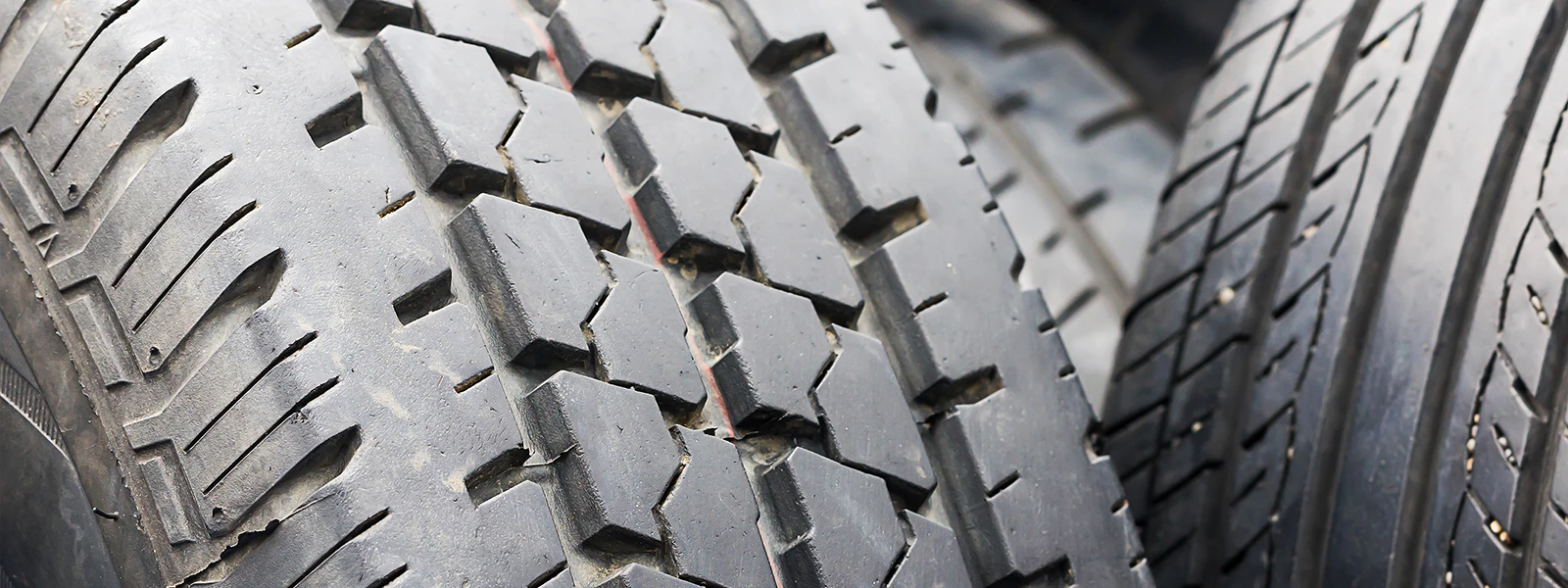
What Happens When Gas Strut Fails?

Gas struts are a simple and common mechanism that people use in their daily life. It is present in their cars, vans, carriers, and so on. It can be compared to a bicycle pump, but the difference is that it contains high-pressure nitrogen air which helps t
Gas struts are a simple and common mechanism that people use in their daily life. It is present in their cars, vans, carriers, etc. It can be compared to a bicycle pump, but the difference is that it contains high-pressure nitrogen air, which helps the piston inside to operate smoothly. The application of gas struts is vast. Let's see more about gas struts in this article.
In this article, we will see about a few things involving the topic of gas struts in detail and understand the nuances behind the same.
What Does Gas Strut Do?
Gas struts are made of two components: a coiled spring and a shock absorber that assists in lifting and supporting other components such as toolbox lids, rear doors, and so on. For more detailed info, please refer to What Dose a Gas Strut Do.
Gas Strut Failure Outcomes
Gas struts are subjected to breakage and damage. The chance of a gas strut being subjected to breakage and damage means a gas strut has its own kind of failure outcomes which will be discussed now. These failure outcomes might be losing control, failure of the anti-lock braking mechanism, correlated damage to other parts, difficulty in steering, and quicker worn-out tires.
1. Losing Control
Control is deemed to be something that most people pay attention to while driving. It is said that struts with faults have a high chance of hindering an individual’s ability to navigate across bumpy roads. It is these faulty struts that might vibrate the wheels of one’s car and once the car wheels start vibrating, an individual is bound to lose control of their vehicle.
These faulty struts have another negative impact which makes your vehicle seem like it is flying over bumpy roads and dips irrespective of the fact even if an individual is driving at a relatively safe speed.
2. Failure Of the Anti-Lock Braking Mechanism
An anti-locking braking system or ABS is kind of a protective mechanism that monitors the speed of car wheels. In the process of tracking the speed of the wheels if the ABS detects that the car’s wheels are locked then its sensors send an emergency message to the controller that is in charge of releasing and applying breaks which helps in preventing lock-up and this, as a result, it might help the person driving their vehicle to main a control.
It is said that the performance of the ABS has a direct correlation with the performance of your car’s struts. So it is pretty evident that the influence of one might be reflected in the other. This means that if the struts get worn out then that will directly affect the working efficiency of the anti-locking braking mechanism making your ABS less effective compared to its efficiency in the past.
For instance, let us say that you are driving along some bumps on a rough road, and then you suddenly feel the need to take a break, but you will realize that you won’t be able to take a break quickly as you expected because of the failure of ABS and as a result, you might meet with an accident.
3. Correlated Damage To Other Parts
All of the car components/parts are correlated to one another. This means if one part faces certain damage, then the other components/parts will face the same damage because they share the same repercussions. A lot of car suspension components that are different from one another rely on the struts that help them to function properly.
So it is important to notice if your struts are malfunctioning, and if you find them to be malfunctioning, you will be able to realize the fact that they may put extra pressure on the other suspension components such as the control arms and ball joints. As it accumulates over time, these issues might end up being fatal, causing a car accident. This is the main reason why they might require expensive and time-intensive repairs.
4. Difficulty in Steering
Ever wondered what helps your vehicle to grip the road? The answer is your car’s struts. The better the condition of the struts, the better grip your vehicle might have on the road while driving. Now moving onto worn-out struts, these worn-out struts are guaranteed to hinder the ability of your car to grip the road to the extent where they will cause under-steering or over-steering. The result of this under-steering or oversteering is yet another fatal road accident.

5. Quicker Worn Out Tires
At one point or the other, you will notice your car’s struts deteriorating, and when this happens, you will see that your tires’ tread might show signs of wear leakage or tear. Worn-down tires will affect the steering and, as a result, can make it extremely difficult to safely steer your car, which may lead to a road accident. Adding to this, it is stated that defective struts that contribute to worn-down tires may put you in a situation requiring you to replace them sooner than expected.
How Likely Will A Gas Strut Fail?
Gas strut failures are a common thing because it eventually wears out after constant usage. The pressure a gas strut hold is at an unimaginable level, leading to gas leakage in due course of time. The tailgate of a gas strut fails to operate even with a minimum loss of 5% of the gas, thus failing the function of the gas strut, the gas pressure inside a strut is sealed by a rubber seal which eventually wears out in time, and this sometimes leads to significant accidents.
Why Do Gas Struts Fail Anyway?
The gas pressure inside a strut is 200 times more than the atmospheric pressure, this is because the cylinder moves freely only under these high pressures. Thus, it's an essential element of the gas strut to have high pressure. Failure of the gas strut happens due to various reasons such as atmosphere, environment, time, usage, leakage of air pressure, wear and tear of the rubber seal, frequency of the metal, and so on. In real-life conditions, the durability of gas struts cannot be determined because their usage varies in many circumstances.
Frequently Asked Questions (FAQs)
What’s The Life Expectancy Of A Gas Strut?
The life expectancy of a gas strut can vary from time to time, depending on its usage and the circumstances. For an ideal circumstance, like at room temperatures, its expectancy can be up to 40,000 cycles this is based on the amount of pressure exerted on it and with proper maintenance. In some cases, its life can go up to 10 years. However, in real life, the expectancy of a gas strut is extremely difficult to predict. It can vary due to several factors: temperature, type of end fittings, environment, frequency, usage, and so on.

How Do I Test A Gas Strut?
The gas strut's durability can be tested using a hydraulic machine. This test is suitable for determining the durability of the open and shut function. For example, using the hydraulic machine, a strut can be operated for 40,000 cycles which is 10 years, the average lifespan of a gas strut.
The gas strut is operated with a gas pressure of 65 kg, one end of the gas strut is in a fixed position, and the other end of the machine pulls and pushes the strut. Some scratch marks and powder residue are seen at 20,000 cycles; at 40,000 cycles, the outer structure has no significant damage other than some marks. At last, the pressure is noted, which denotes a drop from 65kg to 61kg. The strut works well and is in good condition. Thus concluding that the lifespan of a gas strut is 10 years.
Can You Re-gas A Gas Strut?
In some ways, a gas strut can be compared to a bicycle pump. The compression of the cylinder is affected by the pressure of nitrogen. A piston rod is found in the strut, which retracts upon compression and accumulates energy which is then released. To Re- Gas Strut, specific steps are to be followed:
- For your safety: use gloves and safety glasses to prevent any sudden burst of gas from exploding from the cylinder.
- Remove the terminal of the strut and find the valve which is used to adjust the pressure.
- If it needs more gas, a nitrogen pump can be fitted into the mouth of the valve, and gas can be injected to decrease the pressure. The valve can be screwed until it does not feel tight.
- At the moment of a gas leak, immediately close the valve and put it on a new terminal at the end of the gas strut.
Can I Fix My Gas Strut?
Two things are needed to fix a gas strut: a flathead screwdriver and a towel. After gathering these things, locate the strut cap, slide the screwdriver, and then use it to pop off the end of the strut from the joint. Use the same technique for the other end, too. Clean the joints, and use a towel to wipe off the excess grease or oil. Installing a new gas strut is much easier than removing it. Just position the two ends of the gas strut into the ball joints, and if one end is not aligned correctly, slide it until it's in the correct position and lines up with the ball joint. At last, make sure that the ball joint is secured in its place and doesn't come off. This fixing of a new gas strut is complete.

How Catastrophic Is A Gas Strut Failure?
Gas struts fail eventually over time; it's common among gas struts even as they lose 5% of the pressure- the tailgate does not stay open. Gas struts in cars, vans and people carriers are designed to fail inherently. The pressure inside the gas strut is unimaginably high, and the only thing that holds the pressure is a feeble rubber seal. Over some time, the seal will eventually wear out, and the gas starts to leak. Sometimes, the rubber seal instantly falls off, resulting in an explosive burst of pressurized nitrogen gas. This will result in catastrophic accidents, such as breaking glass while driving, a sudden burst of nitrogen that can pop off people from the people carrier, and so on.
Conclusion
Gas struts can be of great use because of their simple structure and easily replaceable capabilities, but they also can fail in some incidents. It's all based on the usage and maintenance of the strut. If it's maintained well and the product is of high quality then all failures can be avoided, and you can expect long-term functioning.
